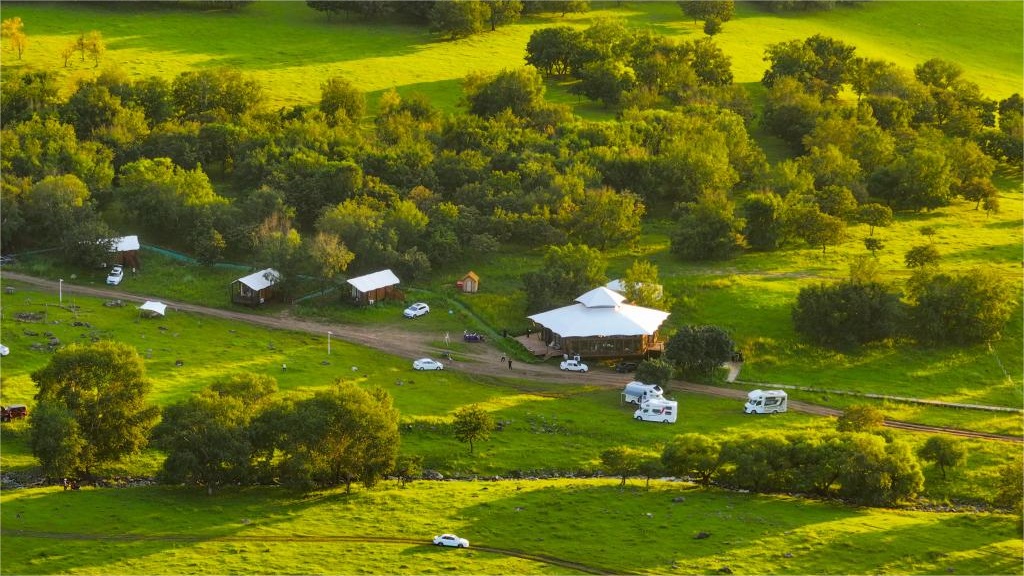Wildfires scorch home values in Western U.S.
SACRAMENTO, the United States, Aug. 30 (Xinhua) -- As wildfires continue to rage across the western United States, their impact is expected to further harm home values in the region, with California taking the hardest hit.
In California, where wildfires damaged property for decades, residential real estate values had been more adversely impacted in recent years due to being close to past wildfires, according to a new study released this week.
The study by the Federal Reserve Bank of San Francisco indicated that properties in high-risk areas often experience a decline in value following major wildfire events and the impact was particularly felt in the vegetated and mountainous areas around Los Angeles and in the Sierras, as these areas were closer to where wildfires burned.
This depreciation was due to the physical damage caused by fires and the perceived risk associated with living in these vulnerable locations, according to the research.
A separate study, published in the journal "Landscape and Urban Planning" last month, corroborated the finding that wildfire proximity negatively impacts nearby property values.
The study showed that homes in areas close to wildfires, especially those experiencing frequent or large-scale fires, tended to see price reductions.
Specifically, in California, homes within 8 kilometers of major wildfires, even if not directly burned by the flames, saw an average decrease of 2.2 percent in value between 2016 and 2021.
Besides direct impact from physical destruction of buildings and infrastructure, wildfires can also have indirect effects by changing perceptions of wildfire risks among homeowners and buyers and increasing home insurance prices, the study said.
Many insurance firms have left California or stopped issuing new policies after reporting loss of money in the wake of multiple, costly disasters.
California Department of Insurance recently approved home insurer Allstate's request to increase rates by 34 percent, the largest rate increase the state has seen in the past three years.
In Washington state, homeowners faced a coverage crisis as insurance companies increasingly drop policies in fire-prone areas. This trend left many residents with limited options and soaring premiums, even before a fire ignites.
Colorado and Oregon are experiencing similar challenges.
In Pagosa Springs, Colorado, local discussions about future development were heavily influenced by wildfire concerns, as noted in a recent Pagosa Daily Post report. Meanwhile, the Oregon Capital Chronicle reported that homeowners in the state were grappling with skyrocketing premiums and a dwindling number of property insurance options due to wildfire risks.
Wildfires are also changing the way potential homebuyers approach their search. Redfin, a major real estate brokerage, has begun including air-quality scores in their home listings. This addition reflected a growing awareness among buyers about air pollution from wildfire smoke in their home-buying decisions.
Furthermore, there's a push for greater transparency in real estate transactions regarding wildfire risks. California and Oregon started requiring a house seller to disclose the risk of wildfire, according to Resources for the Future, a think tank.
The increasing scale and severity of wildfires had put more than 2.6 million homes in the western U.S. under wildfire risk as of July this year, according to the 2024 CoreLogic Wildfire Risk Report released this month.
The potential cost to rebuild these homes was estimated at 1.2 trillion U.S. dollars, the report said, adding of particular concern, nearly half of these properties -- about 1.2 million homes -- have "very high wildfire risk." The increasing reconstruction costs could affect overall property values in these regions.
While the western states bear the brunt of wildfire-related property issues, the impact of climate risks on real estate is becoming a nationwide concern. The 2024 Housing and Climate Risk Report by Realtor.com revealed a sobering statistic: almost half of all homes in the United States are at severe or extreme risk of flood, hurricane winds, wildfires, heat, and hazardous air quality.
Photos
Related Stories
- Soil erosion threatens California's water supply after wildfires: study
- Millions Americans under alerts as heat wave hits U.S. Midwest
- Senior Chinese official meets Bridgewater founder
- U.S. GDP growth in Q2 revised up to annual rate of 3.0 pct
- U.S. wildlife officials finalize plan to kill nearly half million invasive barred owls amid controversy
- 1 killed, 1 injured in U.S. Seattle shooting
Copyright © 2024 People's Daily Online. All Rights Reserved.









